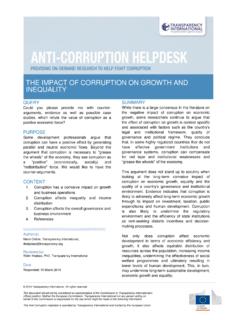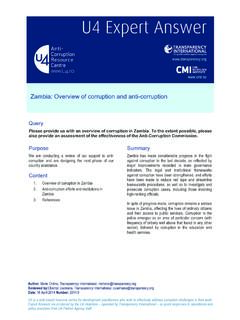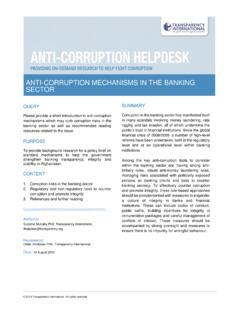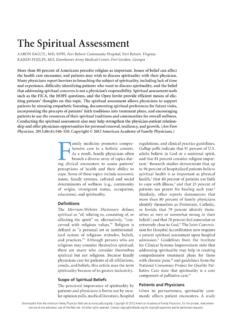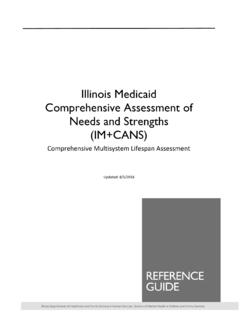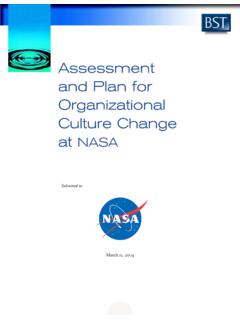Transcription of GOOD PRACTICE IN COMMUNITY COMPLAINTS …
1 good PRACTICE IN COMMUNITY COMPLAINTS . MECHANISMS. QUERY SUMMARY. Can you provide guidance on COMMUNITY COMPLAINTS mechanisms can increase COMPLAINTS mechanisms for humanitarian aid and accountability to aid beneficiaries by providing them service delivery programmes (for example, key with the opportunities to provide feedback on the features, development process and examples of quality and quantity of the services they receive as good PRACTICE )? well as to complain about potential wrongdoing. There is no blue-print for setting up a COMPLAINTS CONTENT mechanism, as it needs to be adapted to the local 1. Key features of good PRACTICE COMPLAINTS context, taking into account issues such as cultural norms and values, level of literacy, phone coverage, mechanisms and social patterns, among others. To address all of 2. Designing and implementing a COMPLAINTS these issues, there is a broad consensus that handling mechanism beneficiaries should be consulted in the design of 3.
2 Examples of COMPLAINTS handling the COMPLAINTS mechanism to develop appropriate governments culturally-sensitive and context-specific responses 4. Resources that identify and address the various barriers to 5. References reporting. Irrespective of the forms, procedures and channels for handling COMPLAINTS , the mechanism should be transparent, independent, accountable, accessible, safe and easy to use. \\\\\\\\\\\\\\\\\\\\\\\\\\\\\\\\\\\\\\\\ \\\\\\\\\\\\\\\\\\\\\\\\\\\\\\\\\\\\\\. Author(s). Marie Ch ne, Transparency International, Reviewer(s). Robin Hodess, , Transparency International Date 5 April 2013. 2013 Transparency International. All rights reserved. good PRACTICE IN COMMUNITY COMPLAINTS MECHANISMS. across the world. While many recommendations 1 KEY FEATURES OF good have been made within the framework of preventing PRACTICE COMPLAINTS MECHANISMS sexual abuse and exploitation, most of the lessons learnt and recommendations also apply to reporting There are many expected benefits from setting up other forms of abuse and wrongdoings.
3 Effective COMPLAINTS mechanisms. To ensure that aid reaches its intended beneficiaries and is delivered in There is a broad consensus across agencies on the an efficient, transparent and accountable manner, key features of an effective COMPLAINTS mechanism. there is a growing awareness of the importance of The golden rule is that to be effective, a COMPLAINTS creating a culture of reporting abuse of this flow of mechanism should be simple, consistent, accessible, funds. More specifically, among others, COMPLAINTS safe and easy to use (World Vision 2011). It typically mechanisms can contribute to (World Vision 2011; fulfils three major functions, including: ensuring that 2009): an effective service is made available for anyone in the COMMUNITY willing to report wrongdoing, ensuring Empowering beneficiaries by hearing and that an immediate and thorough investigation is responding to their concerns.
4 Undertaken after a complaint is made, and making Discouraging corruption, theft and abuse sure that all possible action is taken to support the Increasing transparency and accountability to victim and seek redress (Save the Children 2008). beneficiaries. Developing better relations with COMMUNITY In addition, most sources agree on a few guiding members based on mutual respect and trust. principles for effective COMPLAINTS mechanisms (Save Improving programming, especially with regard to the Children 2008; Oxfam 2004; Building Safer targeting, as inclusion and exclusion errors may Organisations): be corrected. Identifying (early) at field level issues of concern. Sanctions and redress Documenting and providing evidence for more numerous and serious issues. A COMPLAINTS mechanism is likely to be more effective Preventing the potential harm that the and trusted by the various stakeholders if it has the programme could inadvertently cause by finding power and capacity to investigate, gather evidence, out early.
5 Provide some level of redress and/or impose Impact monitoring and benchmarking key sanctions. A mechanism with only advisory powers indicators that can be used to measure may not be able to gain and sustain the confidence performance. and trust of the communities in the COMPLAINTS Promoting a culture of learning by analysing process (Oxfam 2004). reports of COMPLAINTS and incorporating lessons learnt into programming. Safety COMPLAINTS mechanisms are especially well suited for The COMPLAINTS mechanism should be non- humanitarian aid, such as food distribution or threatening and provide adequate guarantees to emergency relief operations, as such programmes allow the safe handling of COMPLAINTS , recognising the provide opportunities for regular contact with the risks associated with reporting allegations of COMMUNITY (for example, through monthly food wrongdoings. This can involve ensuring distribution), with all beneficiaries present at one confidentiality, offering physical protection when place and time necessary and addressing possible retaliation risks against victims or witnesses (Building Safer Organisations).
6 Full anonymity should be provided for Underlying principles complainants concerned about their security There is a recent but growing body of literature and Independence case studies on complaint mechanisms. In particular, the Humanitarian Accountability Partnership For gaining the trust of all stakeholders, it is also International (HAP International) has documented a important that the institutional set-up ensures its number of experiences of COMPLAINTS mechanisms independence from interested parties and promotes that have been implemented by various agencies a consistent, impartial and objective approach in all 2. good PRACTICE IN COMMUNITY COMPLAINTS MECHANISMS. investigations and decisions. This can involve making as transparent when members of affected sure that all funds are kept independent of the control communities know it exists, have had input into its or influence of any stakeholders.
7 This also involves development, have information on how to access it using transparent selection criteria for the staff of the and contribute to ensure it is adhered to. COMPLAINTS mechanism, such as the ability to deal thoroughly and fairly with the request, the integrity In addition, there should be clear rules about and independence from the various stakeholders, as transparency and disclosure of all information on well as knowledge and experience of humanitarian COMPLAINTS and decisions, while making sure that assistance operations, among others (Oxfam 2004). victims, witnesses and complainants' security is not Some also recommend that the mechanism be threatened. It is recommended that the personnel, independent from the providing agency the complainant and the communities be regularly informed on measures taken to prevent wrongdoing. Accessibility The COMPLAINTS mechanism should also periodically The COMPLAINTS mechanism should be simple and report on its activities, performances and cases available at the COMMUNITY level, with clear rules (World Vision 2011; Oxfam 2004).
8 About how to report and to whom. People should know of the procedure and have easy physical barriers to complaining to take into access to the COMPLAINTS mechanism. consideration This can include providing different channels for General barriers complaining (phone, dedicated staff, locked box, among others,). This also includes making all It is important that the COMPLAINTS mechanism be set relevant information about the projects and up in a way that identifies and addresses the multiple COMPLAINTS mechanism available in appropriate barriers to reporting within communities. Several languages. In selecting the reporting channels, it is reasons are typically invoked for not reporting cases important to consider how literate the target of abuse and wrongdoing as documented for population is and how likely it is that they will have reporting cases of sexual abuse and extortions (Save access to phone communications (HAP International the children 2008; Inter-Agency Standing Committee 2007).)
9 Task Force on Preventing SEA 2004), including: The mechanism should be non-discriminatory, Fear of losing the social benefits, source of inclusive and accessible to all, including those that income or of withdrawal of assistance provided are vulnerable, marginalised or outside of the by the agency mainstream system (Save the Children 2008). All COMPLAINTS should be handled, irrespective of Fear of stigmatisation and discrimination of the whether the perpetrator is a representative of an victim, including based on race, class and international organisation or from the local ethnicity COMMUNITY . Fear of not being taken seriously The COMPLAINTS mechanism should be free of charge for communities of beneficiaries. In some cases, Fear of reprisal or retaliation from the perpetrator, depending on the nature of the COMPLAINTS , a his COMMUNITY , family or the organisation reasonable level of financial, technical and legal involved assistance could also be made available to communities to enable them to make their COMPLAINTS Lack of knowledge about the reporting process effectively (Oxfam 2004).
10 Where possible, the and lack of access to people with the power, mechanism should hold its hearings and/or feedback authority and willingness to act sessions where local COMMUNITY members live and in surroundings that are not intimidating Isolation, lack of support and feeling of powerlessness to report abuse and wrongdoing Accountability and transparency The lack of effective legal services to promote Building Safer Organisations refers to a mechanism 3. good PRACTICE IN COMMUNITY COMPLAINTS MECHANISMS. accountability and little faith in the police and determine whether to have a hotline for complaining judicial services to which cases of abuse can be (HAP International 2007). reported Lack of faith in the response. 2 DESIGNING AND IMPLEMENTING. A COMPLAINTS MECHANISM. Similarly, it may also be important to identify barriers to report within an organisation and between organisations.




